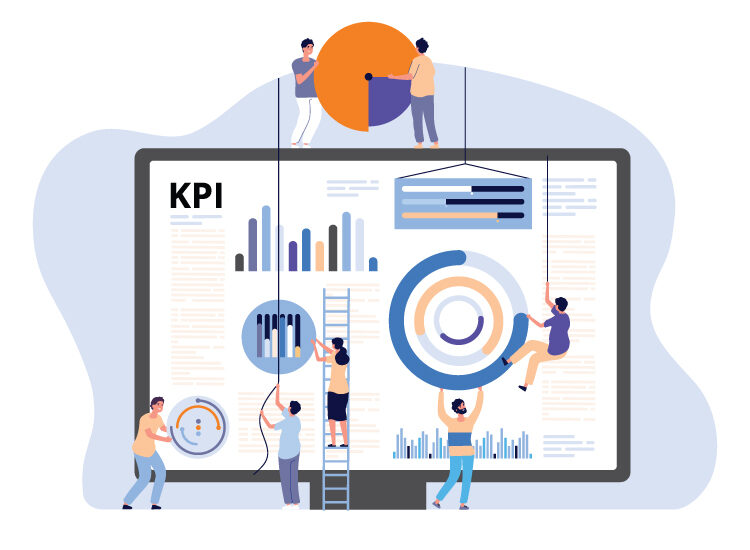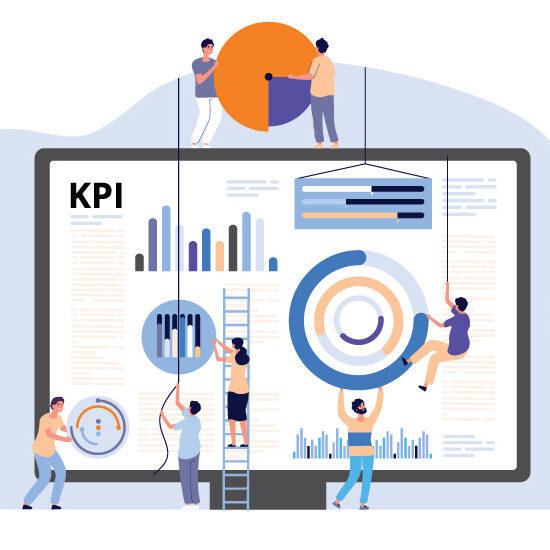What Makes KPIs Important?
Any organization with goals to meet can benefit from KPIs. They help align organizational strategy and execution, with a focus on results.
KPI’s let you check in on how the organization is doing. Based on successes and failures, they allow you to adjust and realign your organization’s strategy and execution.
KPIs support transparency and accountability. Individual team members, teams, and leaders can look at KPI data to get a clear picture of how everyone is progressing and how they contribute to the overall strategy.
Defining and Setting Business KPIs
Different businesses will have different KPIs. Different organizations will have different KPIs. There are no rules for defining KPIs, but they should be a measurement of progress towards goals.
To be effective, KPIs should be primarily quantitative, and they should reveal whether you’re moving closer to your goals or farther away. For example, if a customer service organization has the goal of closing a certain number of service tickets per month, a KPI could be set that shows how close the team was to meet the goal.
KPI’s should be SMART.
Setting too many KPIs can lead to data overload. For clarity, look at only the most critical indicators directly linked to critical goals. You should also be able to connect them to the organization’s overall strategy. Every deliverable is not of the same importance.
Workforce Management KPIs
When setting workforce management KPIs, try to choose metrics that are most relevant to your HR goals. “Choose relevant metrics and KPIs to gain visibility into operations and the effectiveness of goal-related activities,” suggests the U.S. Chamber of Commerce.
Relevant metrics for workforce management can cover everything from talent acquisition (e.g., cost per hire), absenteeism and turnover, and employee engagement. Having these metrics move in the wrong direction can signal a need for change since problems with labor are costly for any business.
Setting clear targets with milestones is especially important for workforce management. KPIs provide a status report on progress towards targets, but they can be difficult to track by hand or with Excel spreadsheets. Workforce management (WFM) systems allow you to set workforce-related goals, such as lowering the absenteeism rate. Then you can define KPIs that track the goals using WFM data.
Workforce management software is an invaluable tool for planning, scheduling, and tracking. Automating data collection with a WFM system can streamline workforce management operations. Using the data to measure KPIs can increase employee engagement and productivity, reduce turnover, and lower workforce costs.
Workforce Management KPI Example
Using absenteeism as an example, you could define a workforce management KPI based on your company’s absence rate. You can calculate this rate by taking the number of days an employee is absent and dividing it by the total number of workdays. An absence rate of 1.5% is standard, or you can check for a different rate for your industry or area. A rate that is significantly different (either higher or lower) could result from an individual’s personal problems or could point towards an issue with company culture. Management can do further investigation and may decide to develop a plan to address either individual or company-wide absenteeism.
Iterate for Success
An organization should never set KPIs in stone. Don’t be afraid to iterate on the development process and change them based on the current needs of your organization. Make sure everyone understands what KPIs are and what they’re used for, then be open to input from others. Communicate openly when you introduce a new KPI or retire an old one. Educating team members about KPIs lets them be part of the improvement process instead of merely the subjects of data used in the process.
While KPI’s evolve over time along with the business, it is helpful to have some “core” KPIs that do not change Year over Year (YoY) so the organization can track its progress YoY on the same “core” key performance indicators.




